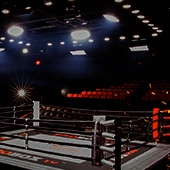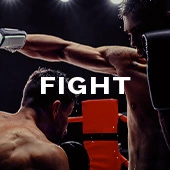by David P. Greisman
Last year, after Floyd Mayweather Jr. defeated Manny Pacquiao, the best boxer of this generation said that he would vacate his world titles — two at junior middleweight and two at welterweight, plus a third, also in the 147-pound division, for which he hadn’t yet paid a sanctioning fee and never would pay it.
“On Monday I’ma relinquish all the belts,” he said at the post-fight press conference last May. “I made the decision in the back that my last fight may not be a championship fight. … The other fighters need a chance. Give the other fighters chances. I’m not greedy.”
By September, Mayweather still had the World Boxing Association and World Boxing Council welterweight titles on the line when he faced Andre Berto for what he said was his final fight. He also still had the WBA and WBC belts at junior middleweight. It wasn’t until early November, a month and a half after Mayweather’s final fight, that the WBC finally stripped Mayweather. It’s now early January, four months after Mayweather’s final fight, and the WBA is only now saying it’ll stop recognizing Mayweather as its titleholder.
It’s clear why Mayweather went against his initial word and held onto the belts for so long. It’s the same reason why Mayweather wanted to keep the World Boxing Organization title in limbo while deciding whether he’d pay a sanctioning fee — all while Timothy Bradley and Jessie Vargas were seeking to fight each other for the belt.
The glut of world titles, for all we malign them and for all the deserving criticism heaped upon the sanctioning bodies, are still meaningful to the fighters. They still draw attention; this past weekend’s bout between Charles Martin and Vyacheslav Glazkov would have gotten far less attention were it not for a vacant heavyweight belt, and Martin will get more opportunities now that he won it.
Promoters and managers not only want to get their fighter to a title; they then want to have control of that belt’s succession. Mayweather holding onto those titles for as long as he could would help maximize the ability of his adviser, Al Haymon, to get a title opportunity for other fighters in his stable. The sanctioning bodies, meanwhile, like to keep good relationships with the most powerful entities in the sport. After all, those that are the most powerful tend to make the most money for them through sanctioning fees.
It was no surprise, then, that the WBA allowed Danny Garcia to go more than a year without defending his title at 140 pounds. He took two bouts above the junior welterweight limit, then remained the titleholder at 140 until August 2015, when he came in for a fight with Paulie Malignaggi slightly under the full welterweight limit of 147 pounds. It also was no surprise that the WBA, which infamously has multiple titleholders in each division, didn’t elevate Jose Benavidez after Garcia’s departure but instead allowed Adrien Broner, another Haymon fighter, to leapfrog ahead of Benavidez.
It was no surprise that the WBC allowed Garcia to avoid having to follow its rule, however silly, that had disallowed fighters from having belts both from it and from another sanctioning body.
“The WBC will only accept the WBC,” said Jose Sulaiman, the late executive of the WBC, via email to me in July 2012 after Garcia topped Amir Khan to unify the WBA and WBC titles.
“We were not aware that Garcia was holding the WBA belt also, as the approval by the WBC was conditioned to the irrevocable decision by the winner to decide which of the two belts he would exclusively keep,” Sulaiman told me two months later. “We understood that he had kept only his WBC belt. If he has not done it, he better do it, as we would withdraw recognition of his title if he doesn’t.”
Jose Sulaiman passed away in January 2014. His son, Mauricio, took over the organization. I spoke to Mauricio again about the question in November 2014, more than two years after his father said Garcia would have to pick one or the other.
“It’s a big misunderstanding. The WBC has always, forever, participated in unification fights when it is good for the sport,” he said.
Then again, as of November 2015, the WBC rules still say this: “If a WBC champion wins a title of another organization, the WBC may grant the champion 15 days to elect which title the champion will keep and which the champion may vacate. If the WBC champion then does not make such an election, the WBC shall thereafter have the authority to vacate the champion’s WBC title, unless in the exercise of its sole discretion the WBC permits the champion to retain both titles.”
In other words, there are rules that must be followed except for when the WBC decides not to follow its own rules. (The WBC isn’t the only one to be inconsistent like that.)
All of this leads into the latest way the WBC is helping Garcia and Haymon out. In the wake of Mayweather’s titles being vacated, the WBC announced that it would be holding tournaments at welterweight and junior middleweight. But once the tournaments were announced, it became clear, well, that they weren’t tournaments.
In late November, Haymon’s “Premier Boxing Champions” venture announced that Garcia would face Robert Guerrero on Jan. 23 — what is now this coming weekend. Last week, the WBC declared that Garcia vs. Guerrero would be for its title, that Amir Khan would be mandatory contender to the winner, that Lamont Peterson vs Andre Berto would be “a final elimination bout to determine” the next mandatory contender, that the winner of Sammy Vasquez vs. Aron Martinez (which’ll be on the Garcia-Guerrero undercard) would face the winner of Miguel Barrionuevo vs. Azael Cosio for the right to be considered a wild card, and that the injured Ray Robinson would also be a wild card. A similar mandate was set up at junior middleweight.
The WBC didn’t have to say it would do a tournament. It could’ve just ordered its top two available contenders to fight for the vacant belt. That’s not what’s happening here. Instead, we have a fight that shouldn’t be for a world title but nevertheless is, and we have a tournament that isn’t a tournament.
“There is always going to be criticism,” Sulaiman told me this past weekend. “In this case, we were very clear from the convention. We laid down what the process was going to be. We organized a tournament … We publicly invited any fighter who wanted to participate to let us know. We sent out letters inviting fighters to participate. And we got all the information, we took two months, and we set out the process for how it was to take place.”
Haymon has many of the top names and even several of the second-tier fighters at and around welterweight. Garcia, whose lone win of note at 147 came against Paulie Malignaggi — unless you also want to consider his close scrape against Lamont Peterson at a catch-weight of 143 pounds — was installed at No. 2 in the WBC’s rankings, seemingly based on the strength of his time spent one division below.
Guerrero somehow is No. 6.
“He’s a former champion,” Sulaiman said. He soon added: “Guerrero is a fighter at an elite level.”
Guerrero hasn’t looked elite for some time. His last big win was in 2012, when he bested Andre Berto in a war. That got him a fight with Mayweather in May 2013; Mayweather won, as he’s done every time in the ring. Guerrero then won an absolute war with Yoshihiro Kamegai in June 2014, then looked to put up whatever he had left in a loss to Keith Thurman last March. By June, Guerrero stepped in with upstart journeyman Aron Martinez, got dropped in the fourth round and escaped with a split decision win that many felt Martinez deserved instead. He didn’t look good at all.
Guerrero could still have one last great performance. He could be too much for a Garcia still getting situated at 147. Or he could be done. No matter what, it’s a fight that shouldn’t be for a title, especially if you’re going to call it a tournament. Tournaments don’t begin with the champion being crowned. The Green Bay Packers’ win over the Washington football team didn’t make the Packers the NFL champions; the Packers didn’t even make it past the second round of the playoffs.
This is, in essence, a title fight and then a bunch of eliminator bouts being ordered. The other fighters have to earn their way to a title shot. A title shot is a point of pride for a boxer’s career. Garcia and Guerrero are being afforded an opportunity that the others will need to do more to earn. Garcia needs one win over a potentially done fighter in order to become a two-division titleholder. The other fighters will have to pick up multiple victories.
It’s not at all the worst offense that a sanctioning body has committed, but it is yet more BS in a sport and a business that each are often full of it.
( For a full video of my interview with Sulaiman, go to http://bit.ly/wbc147 )
“Fighting Words” appears every Monday on BoxingScene.com. Pick up a copy of David’s book, “Fighting Words: The Heart and Heartbreak of Boxing,” at http://bit.ly/fightingwordsamazon or internationally at http://bit.ly/fightingwordsworldwide. Send questions/comments via email at fightingwords1@gmail.com



